Cape May Fall Migration Trip Report 2025
Cape May is well known for its bird migration. Tens of thousands of birds migrate through the funnel that is Cape May annually. Seeing hundreds of Tree Swallows at Cape May Point State Park and a dozen raptors in the sky in one binocular view is just the tip of the birding iceberg that is Cape May, NJ. Not just birds of course, Butterflies and Dragonflies make use of this passage as well. We saw our fair share of insects on our tour as well, some beautify Dragonflies, Butterflies and other neat animals. Our weather behaved for the whole trip, the only issue was the wind direction did not lead to exceptional overnight migrant flights.

Twelve-spotted Skimmer © Josh Gant
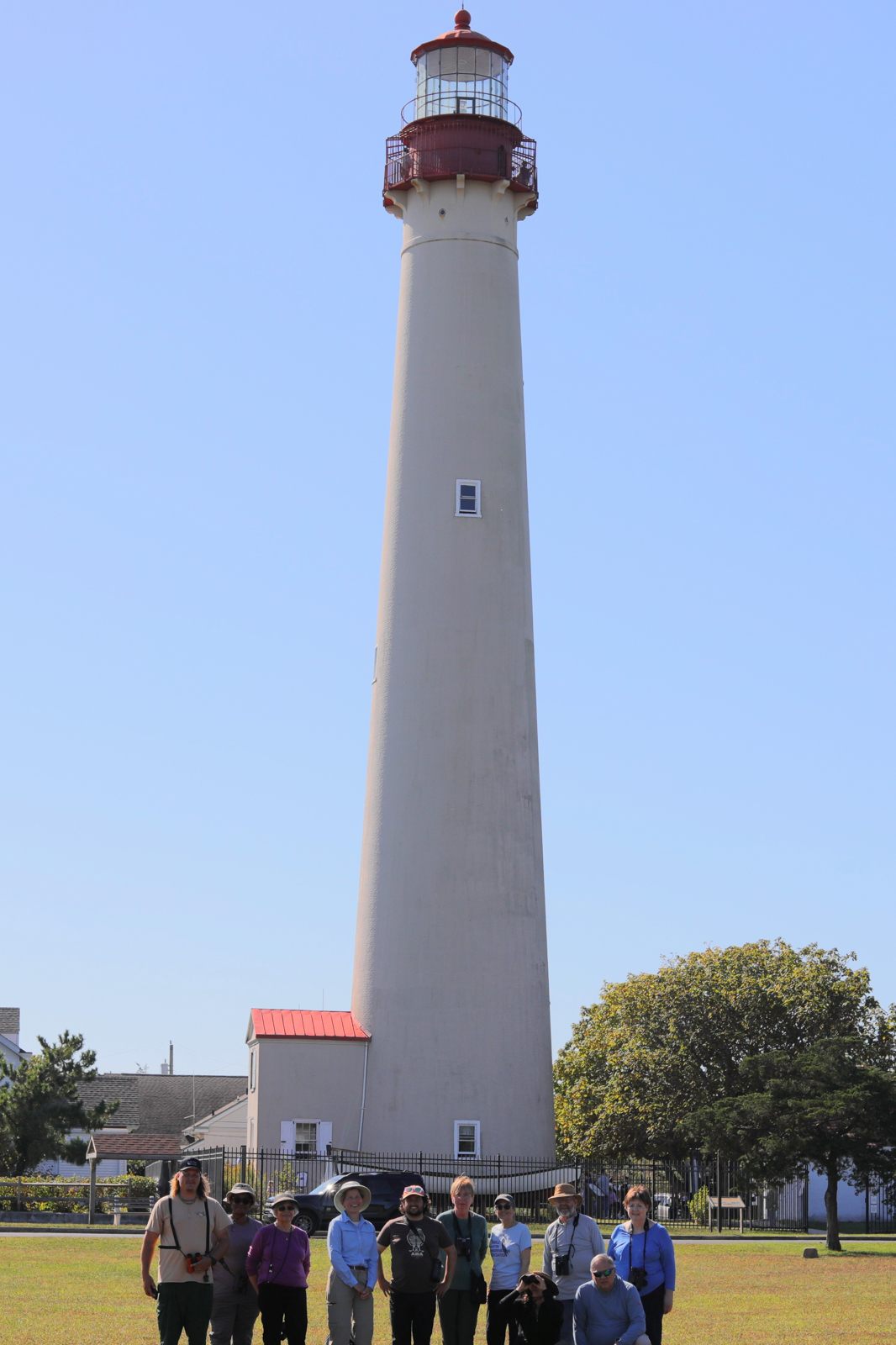
Cape May Point State Park Lighthouse © Joshua Gant
We had our first sighting before we even made it to Cape May when a Belted Kingfisher decided to fly over our dinner spot the first night. On the way to Cape May Point State Park we stopped at a rest area and were greeted with our second species of the trip, a small flock of House Sparrows of course.
We arrived at Cape May Point State Park and were immediately surrounded by raptors of many kinds soaring in the sky above us: Black and Turkey Vultures, Sharp-shinned, Cooper’s, and Red-tailed Hawks, Bald Eagles, Kestrel, Merlin and Osprey were all ticked off the list very quickly. From the Hawk Watching Platform the group had a great view of Bunker Pond which had an array of ducks and other waterfowl floating on its calm surface. Two flocks of White Ibis soared overhead as we started for the trail.
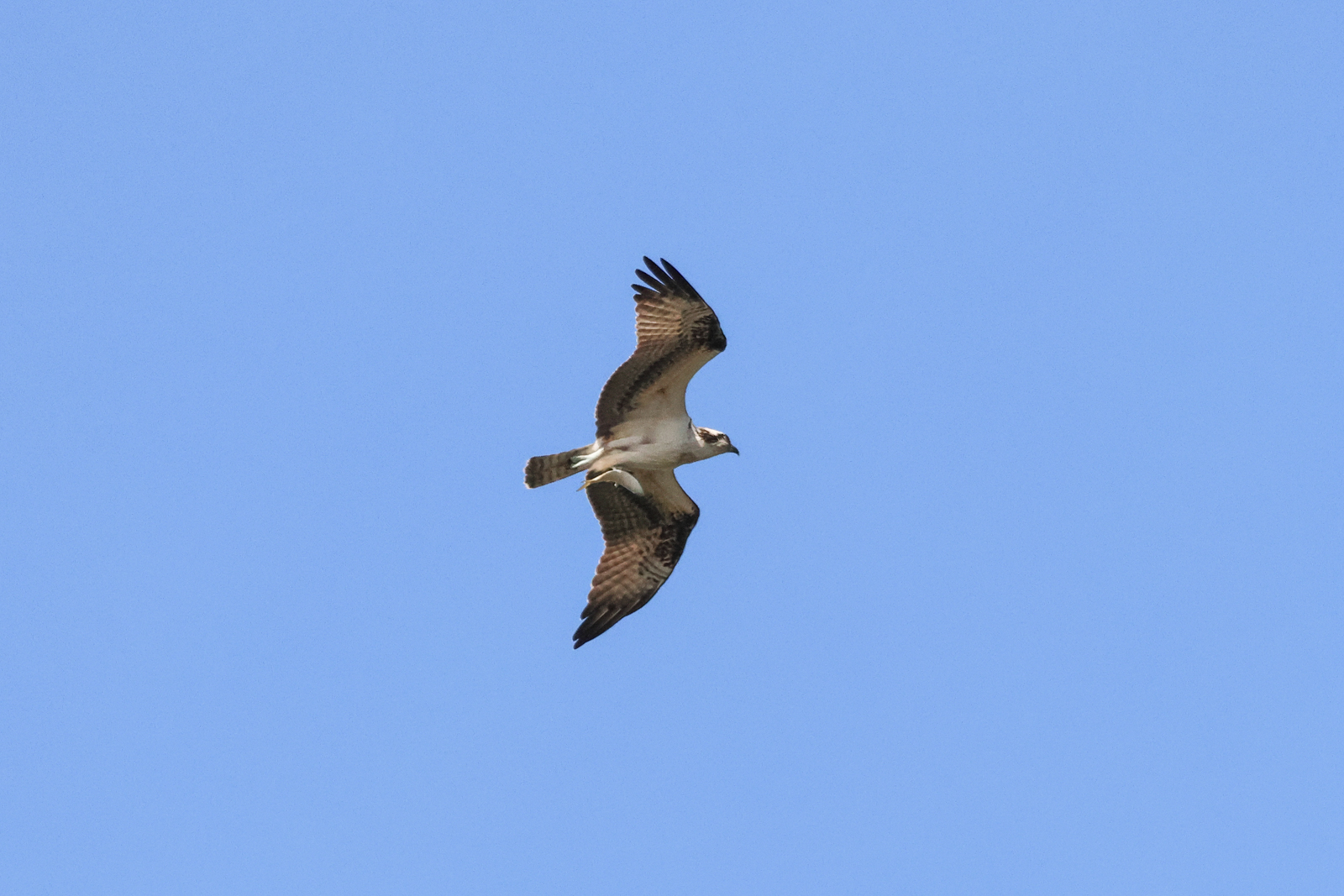
Osprey © Sam Darmstadt

White Ibis © Kathy McDermott
After a picnic Lunch we made our way to the Queen Street jetty where we were greeted by a large group of Black Skimmers and Royal Terns loafing on the beach. There were a few interlopers among the flock’s members like an American Oystercatcher, a few species of gulls including a Lesser Black-backed Gull, and a couple banded Royal Terns as well. We also saw our only Scoters of the trip, a group of Black Scoters cruising north just over the water.
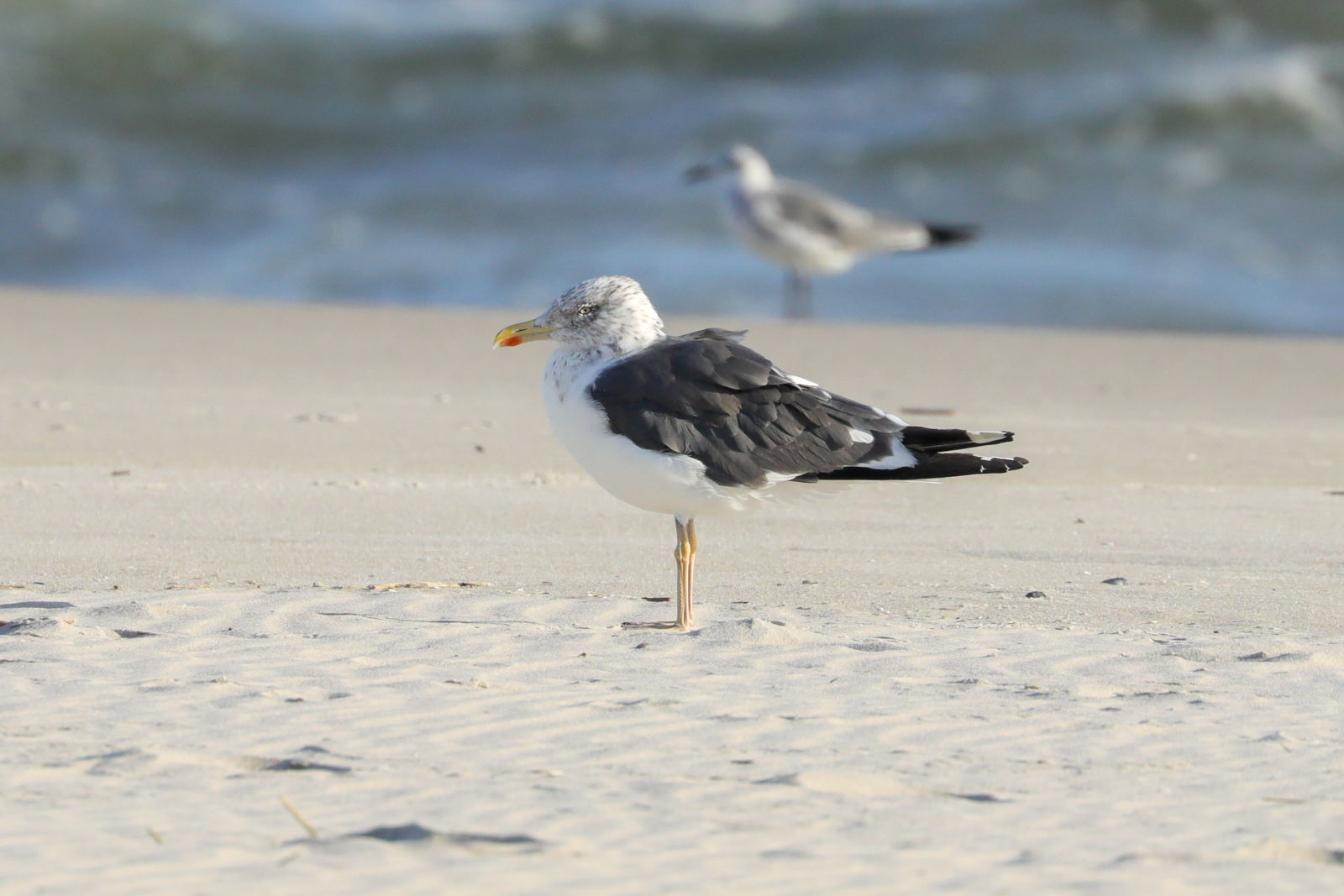
Lesser Black-backed Gull © Josh Gant

Black Skimmers at Queens Street Jetty © Joshua Gant
The wind direction not being suitable for migrants, we made quick work of Higbee Beach and the Beanery. Thankfully a few Warblers did decide to stick around, and the group was able to get on a Cape May Warbler, American Redstart, and Black-and-White Warbler. Surprisingly Wild Turkey was the talk of the vans for a while after a light gray colored, or Smoke Phase, Turkey was seen in a field.
Lunch at the Cape May-Lewes ferry Terminal’s North Jetty pavilion offered views of hundreds of gulls and of Coastal Bottle-nosed Dolphin, a species recently split from its more pelagic cousin. We headed north and explored the saltmarsh around Nummy Island next and visited the Wetlands Institute which was a big hit to end the day. There were many Clapper Rails Calling around us and quite a large flock of shorebirds, egrets and herons at the entrance giving the group a great view of adult and immature Little Blue Heron next to each other along with Snowy Egrets to compare.

Coastal saltmarsh © Sam Darmstadt

Group birding at the Wetlands Institute © Sam Darmstadt
Before our safari on the local pontoon boat the Osprey, we stopped at the South Cape May Meadows. This location is well known for its amazing species diversity. We had a variety of shorebirds and songbirds at this site along with some of the sneakier inhabitants, Virginia Rail and Sora. The group got up close and personal with a Gray Treefrog on the boardwalk trail at the meadows.
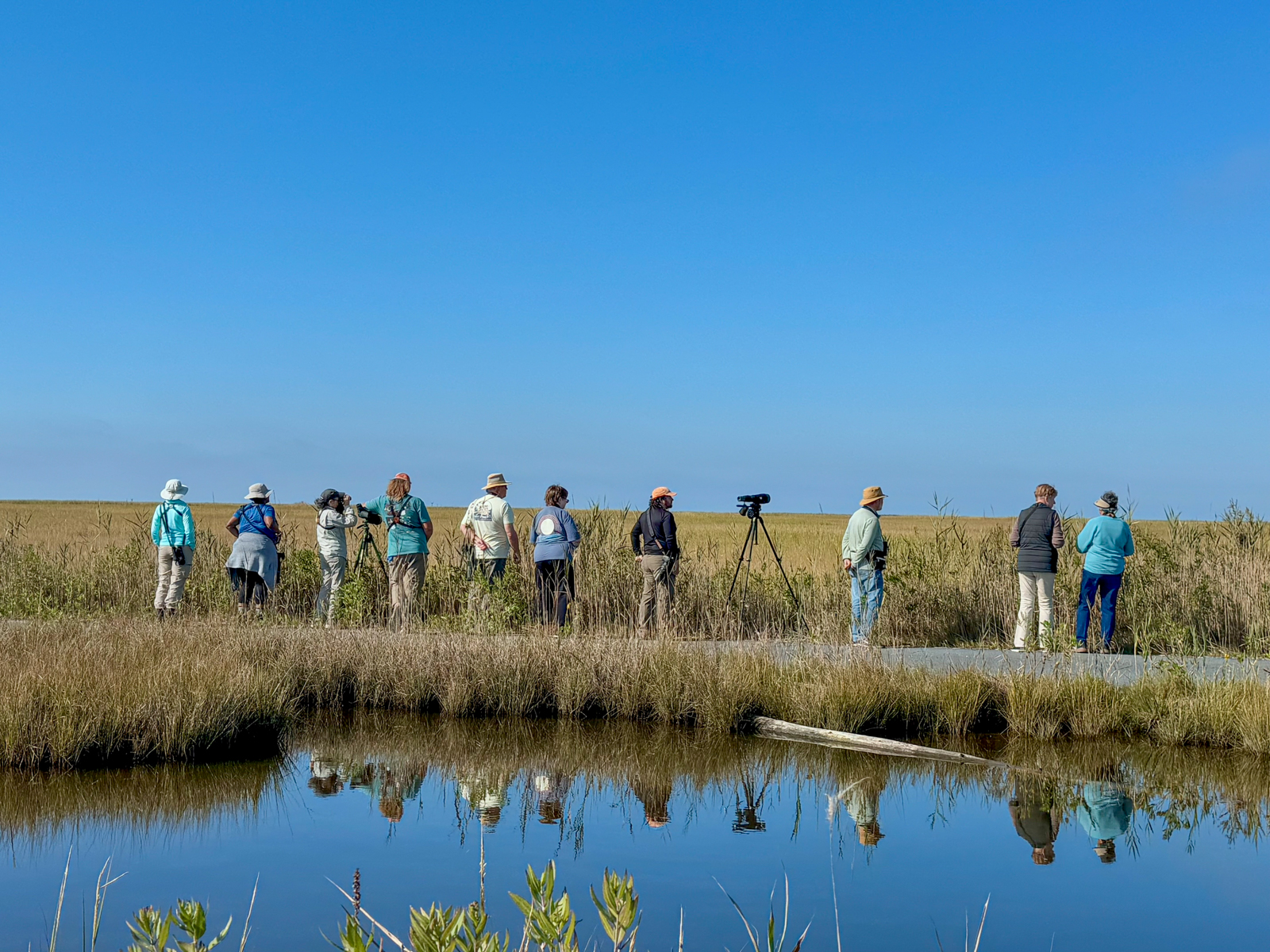
Birding the South Cape May Meadows © T Hedman

Gray Treefrog at South Cape May Meadows © Josh Gant
The boat tour was amazing. The tide was quite low, and the birds of the marsh were on full display. Boat-tailed Grackles careened over the marsh grass, Black-bellied Plovers called, and a large flock of American Oystercatchers were on Full display on the open mud flats. We also had a unique sighting on the boat, when a coyote was spotted in the saltmarsh.
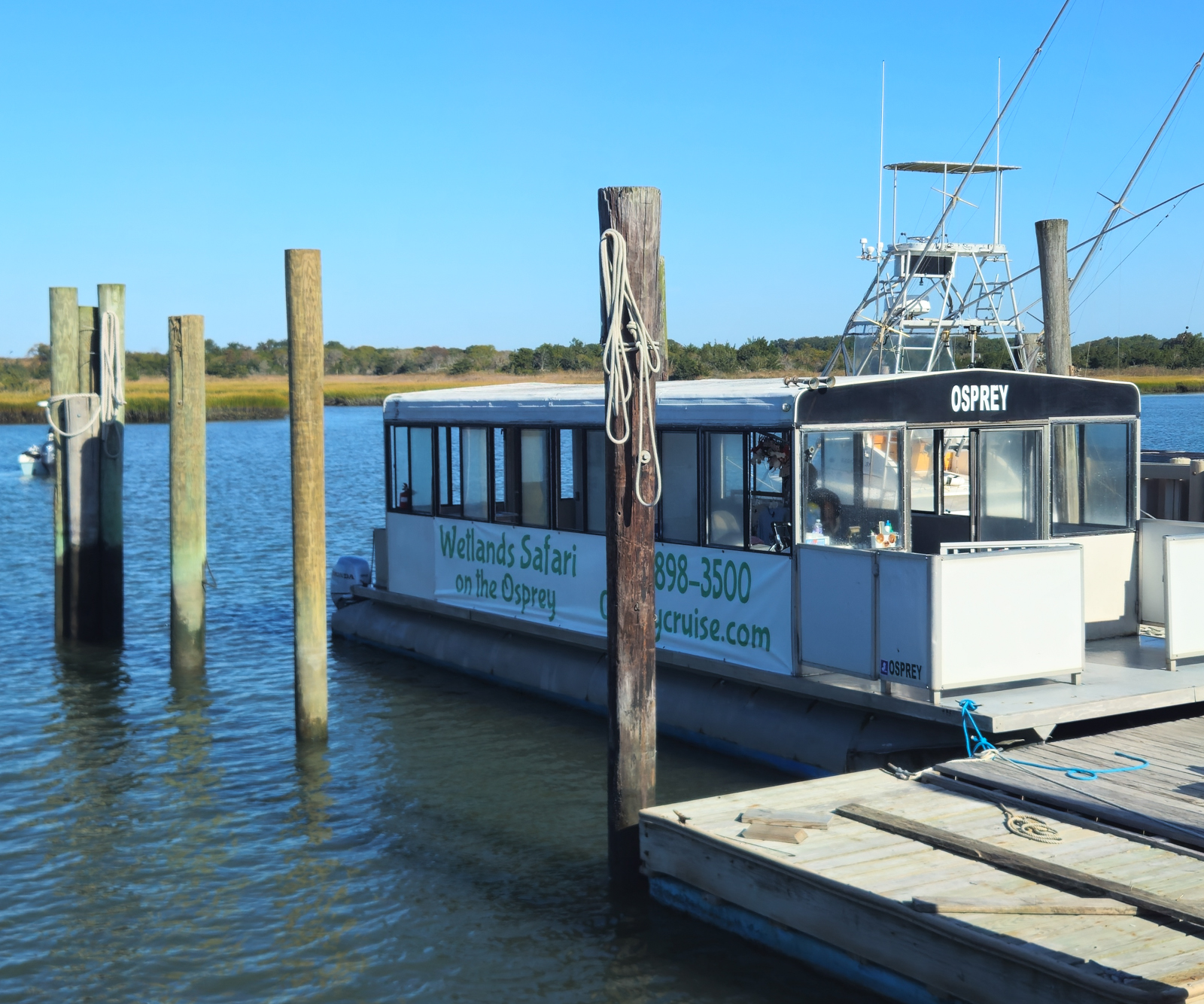
Edwin B. Forsythe is a name any birder visiting New Jersey will probably have heard of. Outside of Cape May County, this location has the second highest species count in the State. The sheer grandeur of this place was on full display for us. Ending the count with 77 species including targets like American Avocet, Nelsons Sparrow, Blackpoll and Bay-breasted Warblers, Bonaparte’s Gull, and Caspian Tern, this legendary location lives up to its reputation.

Birding at the Edwin B Forsythe NWR © Sam Darmstadt
We finished the day at the Avalon Seawatch and got to speak with the NJ Audubon seasonal counters. Although we did not have favorable winds there were still some targets to tick on the list. Western Sandpipers scurried among the rocks within a flock of stoic Sanderlings bracing against the south wind.
The last day of the trip arrived, but of course there were still birds to be seen. We Loaded the vans and departed for a newly opened trail in Downtown Cape May, the aptly named Cape May Nature Trails. The raised boardwalk gives amazing views of the shortgrass saltmarsh surrounding it. We had so many clapper rails calling around us, finally, one flew up and gave us a short glimpse before landing and disappearing back into the grass.

Cape May Nature Trails © Sam Darmstadt
We took another side quest on the way back to hotel and visited Jakes Landing where we had decent and close views of some of the secretive marsh dwellers we had been searching for. Seaside and Saltmarsh Sparrow and Marsh Wren were some of the targets we were able to finally get eyes on. The last stop of the day was a well-loved birding location by folks who call Philly home, John Heinz National Wildlife Refuge. It may not have had as many species as Forsythe, but the views of the birds we got were unmatched to almost any other location on the trip. We were actually able to scope a Blue-headed Vireo and had Palm Warblers about 5 feet from us.

Blue-headed Vireo © Josh Gant

Palm Warbler © Josh Gant




